|
Born in the Black Hills among the Sioux, raised on his father’s farm in Illinois, halfbreed Ethan Fraser’s service to the Union ends abruptly with his capture at Chickamauga Creek. Thus begins a journey that extends from Cahaba Federal Prison to Confederate Mobile and war-torn Chattanooga before turning west across the American Frontier and the vast lands ranged over by the Cheyenne and Sioux.
A richly textured weave of history and fiction, Following the Eagle will appeal to fans of historical fiction and anyone with a penchant for epic novels, intriguing characters and passionate, complex relationships. |
|
|
|
|
|
REVIEW
Jenkins’ debut novel tells the riveting Civil War saga of Ethan Fraser, a half-white, half-Sioux teenager who journeys from his Illinois home to Civil War battlegrounds to imprisonment in Confederate prisoner camps, all in a quest to understand his Native American roots.
Readers join Ethan near the beginning of the Civil War—he joins the 36th Illinois after one of his older brothers is killed, eventually becoming a courier for a Northern spy. Readers follow him on a daring escape from captivity behind enemy lines to his recapture and imprisonment in Alabama’s horrific Cahaba Prison. When a prison transfer to Mobile, Ala., offers an opportunity for escape, Ethan is once again off and running, ending up in the home of Elizabeth Magrath, a well-to-to widow of Northern heritage. Before long, Ethan and the widow fall in what passes for love in wartime, but the hero isn’t content to wait out the war in hiding. With Elizabeth’s aid he returns to the Union, only to be court-martialed for desertion and espionage. When a racist jury sentences him to death, Ethan escapes once again, this time determined to find his mother’s people in the Great Plains. He is taken in by a band of Cheyenne who teach him their ways, and learns firsthand the atrocities of so-called “civilized” white men. Ethan struggles to reconcile his two heritages, and eventually negotiates his own peace—one that adheres completely to neither the white nor the Native ways. Jenkins crafts a fascinating tale, painstakingly researched and richly detailed. Part potboiler, part historical fiction, readers won’t be able to put it down until the final page.
An excellent novel—readers will want more. Kirkus Discoveries |
|
|
|
REVIEW
**** |
The Civil War was a defining moment in the history of the United States, and the effects of the conflict echo in contemporary society. Bookstores still devote plenty of precious shelf space to volumes about those four years, and television and web sites keep both the general public and history scholars abreast of new discoveries and their repercussions.
Scattered among the nonfiction are novels that manage to make the war real to those of us living 150 years later. The best historical fiction allows its readers to smell the stench of the battlefield, to taste the stained liquid that passed as coffee, to feel the pain of gunshot wounds and the pain of losing a loved one to the fury of the war. Paulie Jenkins’ debut novel, Following the Eagle, does all this and more.
Ethan Fraser—half-white, half-Sioux—joined the war effort with a strong sense of patriotism; he wanted to fight beside his blue-coated brothers in the name of freedom. However, his loyalties and his dark skin color land him in jail more than once on both sides of the battle lines, and fleeing west to find his mother’s people, the Sioux, feels like his only option. Even among people who look like him he finds judgment and accusations; he discovers he must first learn his own true identity before he can find a home.
Jenkins is wonderfully talented at bringing to life the sensual details of a time gone by. She writes, for example, “They continued into town, along sidewalks shaded by ancient, moss-draped oaks, chinaberry and mulberry, and past an Artesian well where water rose from the ground, sparkling like diamonds as it cascaded into a concrete basin. Lettering on windows advertised dry goods, groceries, tailoring, millinery, jewelry, and the services of doctors and lawyers.” She uses this same power of observation when describing the cruel torture Ethan suffers; readers may be tempted to glance away
during some of the more potent scenes of abuse, a testament to Jenkins’ skill as a writer. The depth of research evident in Following the Eagle is very impressive. From snippets of Lakota language to descriptions of obsolete clothing worn by soldiers, Jenkins includes a plethora of details that make the telling of her story feel both authentic and entertaining...
...Following the Eagle is a wonderfully entertaining first book from a writer who, hopefully, has more to contribute to the genre of historical fiction.
Andi Diehn, Clarion |
Paulie has always had a great love of Wyoming and the West. Born and raised in Casper, Wyoming, she first heard the story of Caspar Collins and the Battle of Platte Bridge Station during a grade school field trip to the Fort Caspar Museum. Years later, in the back of that same museum, she happened across a photograph of George Bent and his wife Magpie. Bent provided not only the inspiration for the character of Ethan Frasier, he became an important character in the book. Paulie is currently researching the sequel to Following the Eagle, which begins in the soon-to-be Wyoming Territory of 1866.
Paulie and her husband are avid sailors and scuba divers. They have homes in Long Beach, California and Friday Harbor, Washington. |
|
|
|
|
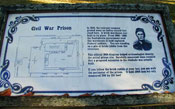 |
|
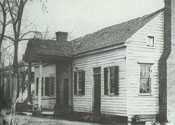 |
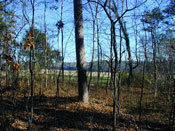 |
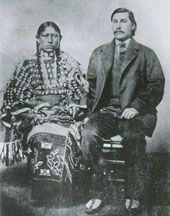 |
|
 |
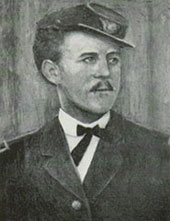 |
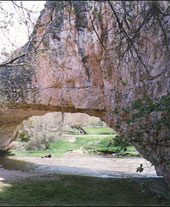 |

|
|
|

